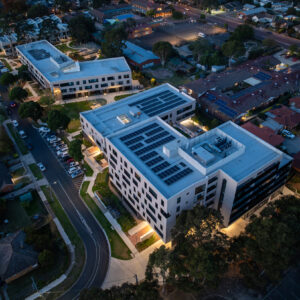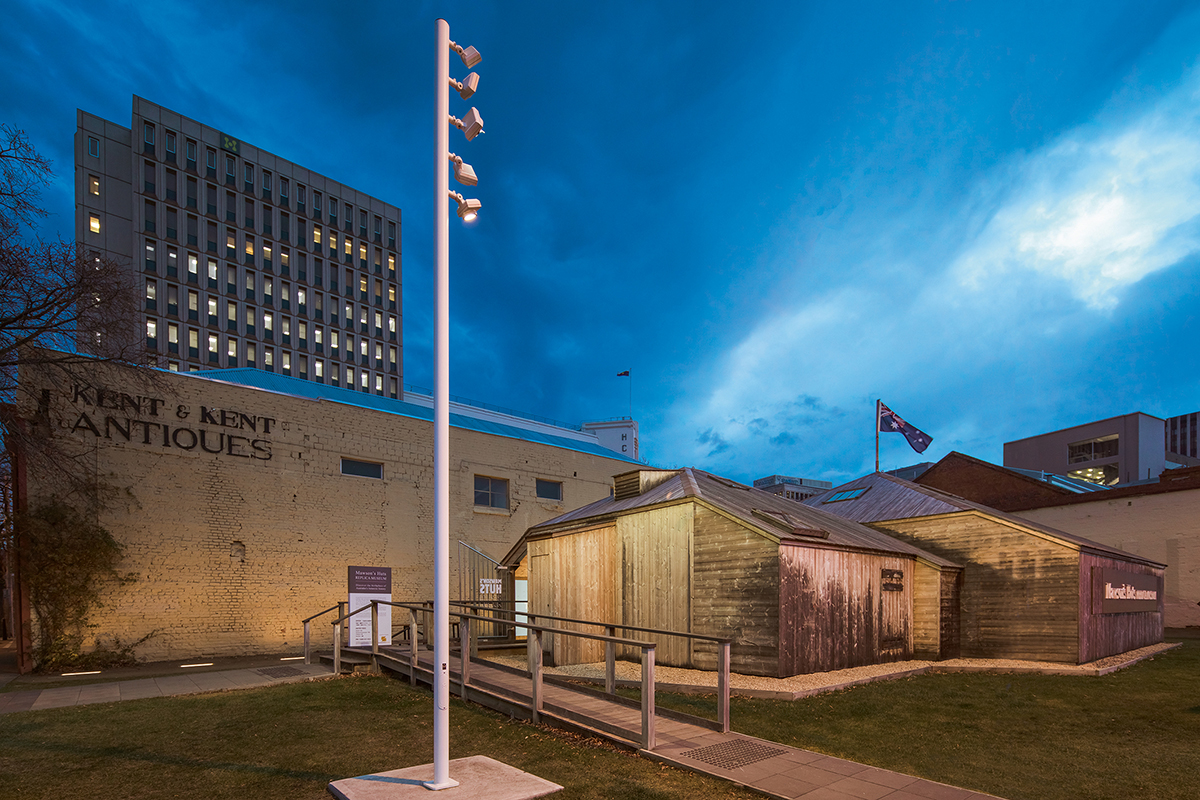
ACCENT, FACADE, FEATURE LIGHTING
Recreating Antarctica in Australia
Hobart, TAS
- Sales PartnerSouthern Lighting and Distribution
- PhotographerJackie Chan
The Mawson’s Huts Replica Museum stands on the waterfront in Hobart, near the wharf from which the SY Aurora sailed south to Antarctica with Douglas Mawson’s Australasian Antarctic Expedition of 1911-1914 on board. The museum features a replica of the historic huts in Cape Denison, Antarctica, constructed by the men of the expedition and provides an historic insight into their daily lives.
Constructed by heritage architects and builders, the huts were illuminated as the result of a collaboration between Mr Stuart Hamilton from WE-EF Sales Partner, Southern Lighting and Distribution, and Mawson’s Huts Foundation chairman Mr David Jensen.
Mr Jensen said he worked on a “consultative basis” with regard to the lighting design for the museum. “Stuart was the brains behind the idea. He embraced the idea of making the Replica Museum a feature on the waterfront at night and came up with the idea of lighting the wall of the adjacent heritage building that runs the length of the replica,” Mr Jensen said, adding that Mr Hamilton also had a light pole specially engineered for the project.
The lighting is designed to “capture the mood of the Antarctic with soft, even low luminance levels outside and contrasting warmth, particularly for the interior” according to Mr Hamilton. “David had a very clear understanding of the reality of the huts in relation to the space, location and feel of where they stood on the frozen continent,” he added.
One of the challenges was the limited wiring positions, due to the site only having a short lease on Hobart City Council land. “There was a chance the building might be moved at a future time, and consequently there were restrictions for wiring,” Mr Hamilton noted. “David Jensen negotiated the installation and funding through HCC to light the Kent & Kent Antiques wall directly behind the hut.”
The WE-EF ETT130 linear inground was chosen for the wall washing of the Kent & Kent wall. “WE-EF’s lensing and evenness of the wash was important, especially for people from distant viewing angles such as the hotel rooms of Henry Jones IXL, Zero Davey St and the Hotel Grand Chancellor,” Mr Hamilton explained.
The design utilises a single pole with six WE-EF FLD100 projectors, with five varying lens distributions including medium beam, very narrow beam and very narrow beam with a linear spread lens. “Lighting the roof, entry and pathways uniformly from a single point was like a jigsaw of lighting. Soft mood-provoking illumination was the main goal,” Mr Hamilton explained, adding that lighting the main living quarters was especially challenging.
“When darkness falls, Mawson’s Huts Replica Museum is swathed in light,” Mr Jensen said. “Being so well lit at night attracts considerable attention from people dining out and those strolling along the waterfront. As a result, many visit the replica the following day. The lighting is a wonderful silent advertisement and it helps to bring history alive at night”. Mr Jensen believes the final lighting design has achieved what it set out to do “without any doubt”, making the museum the envy of many business operators in the area.
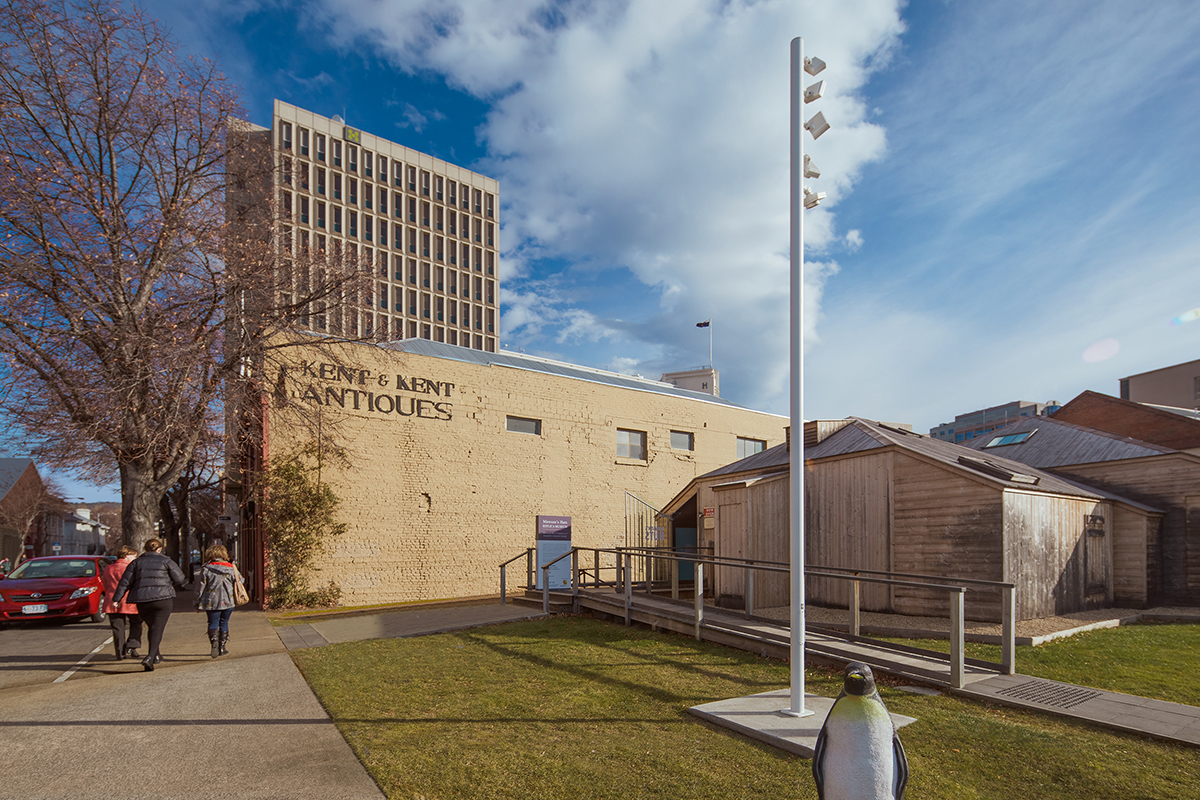
The Mawson’s Huts Museum features a replica of the historic huts in Cape Denison, Antarctica, constructed by the men of the expedition and gives an historic insight into their daily lives.
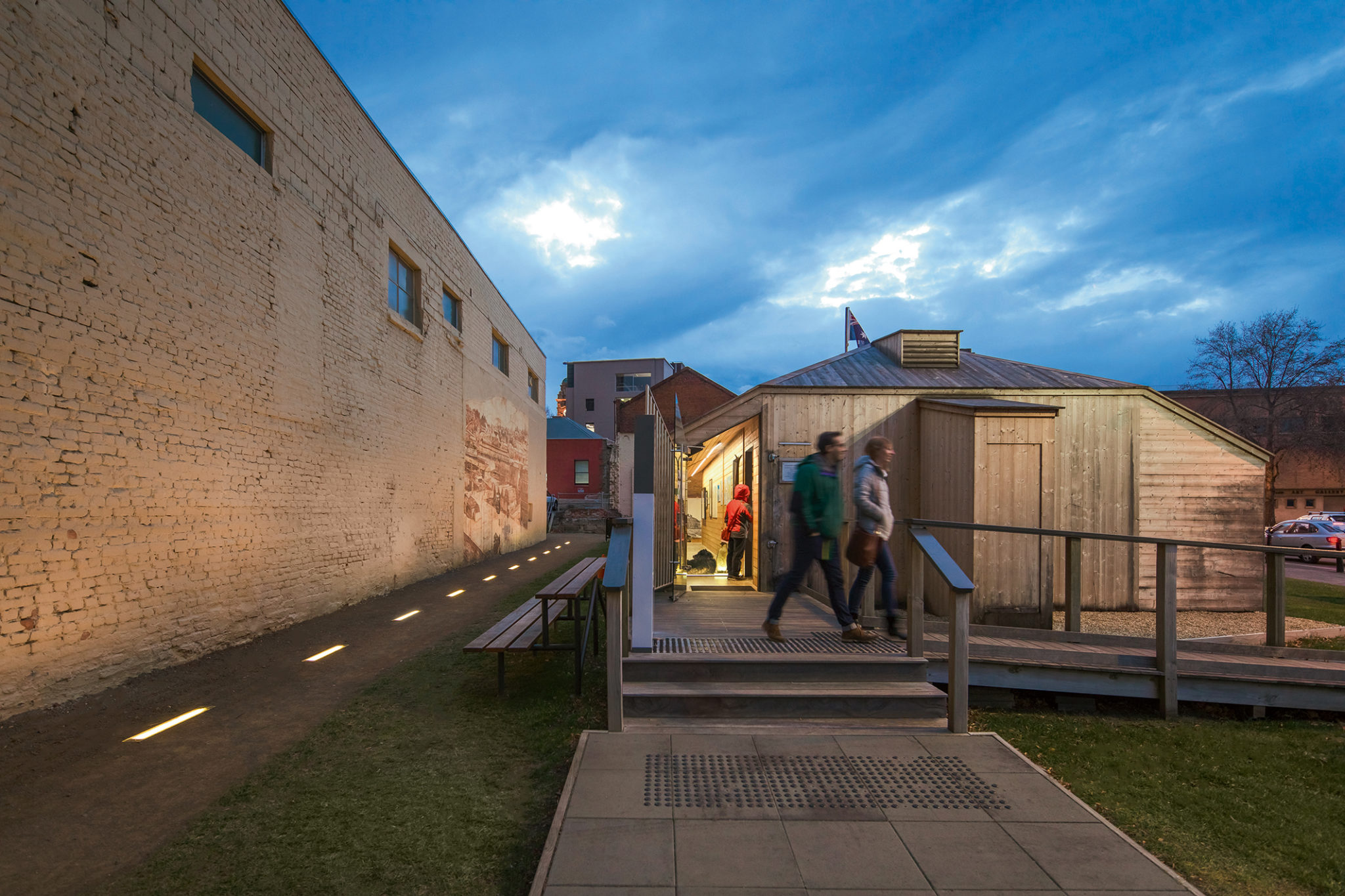
The WE-EF ETT130 linear inground was chosen for the wall washing of the Kent & Kent wall.
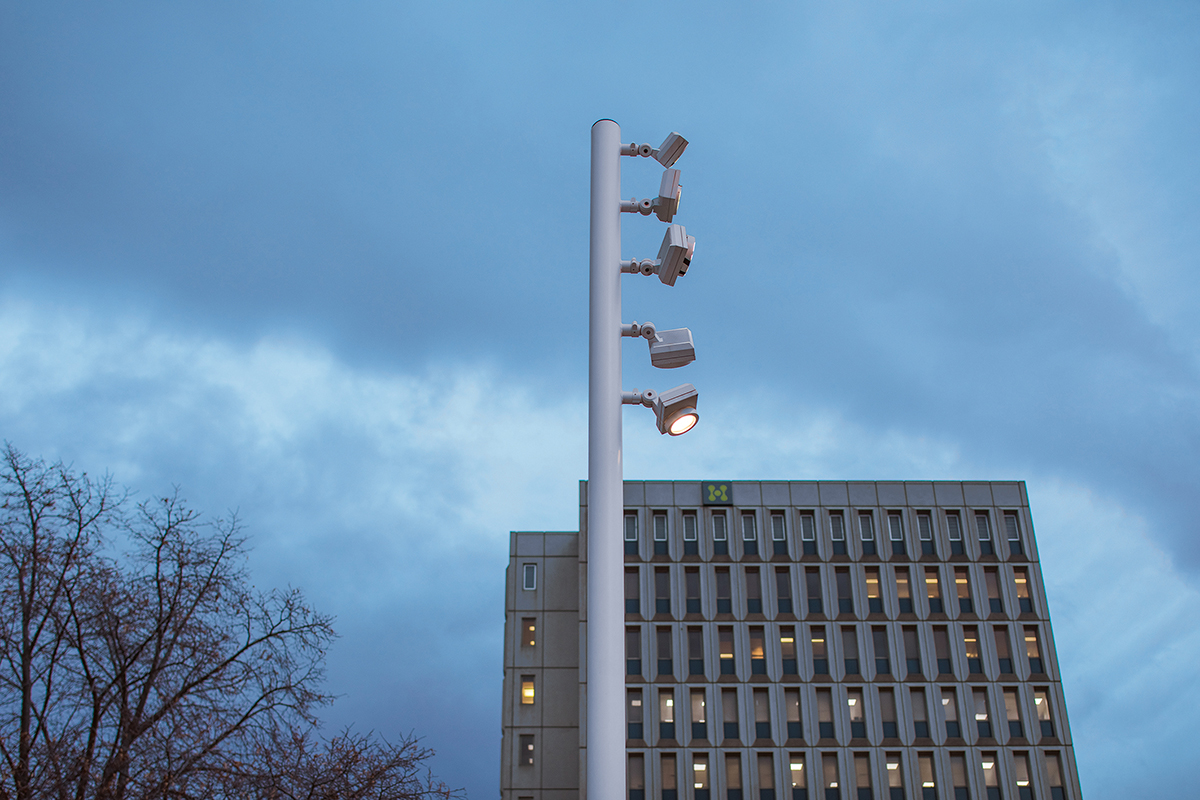
The design utilises a single pole with six WE-EF FLD100 projectors with five varying lens distributions including medium beam, very narrow beam and very narrow beam with a linear spread lens.
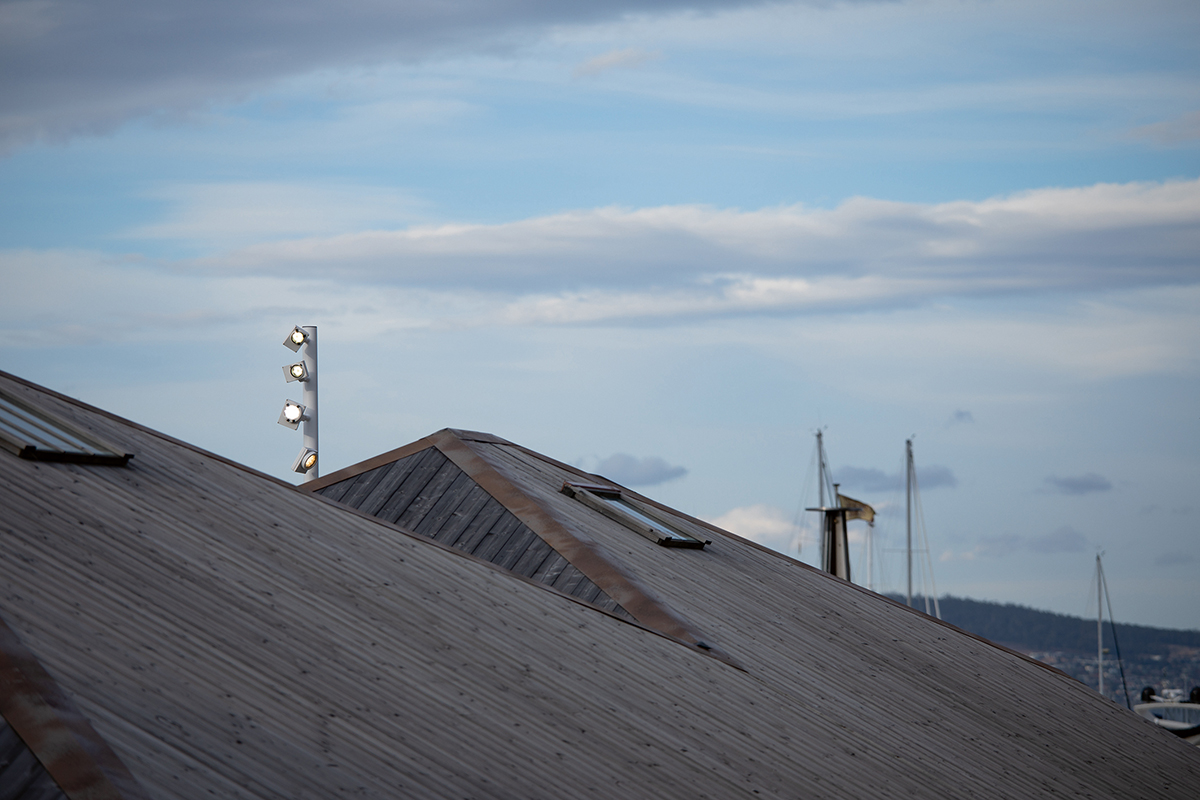
Pole-mounted FLD100 projectors.

